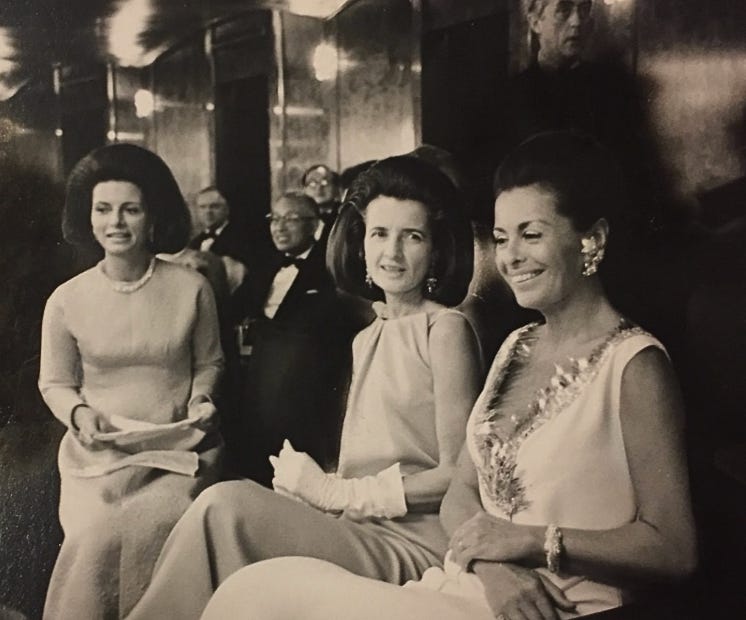Kate Marland: The need to restore and define 'highbrow culture'
For too long, enemies of the good and the beautiful have torn down both and gone unopposed.

I think it is safe to say that the culture war on the Canadian right has entered its “hot” phase in the past week. Some of our brightest minds are exchanging fire over whether the government, specifically a future Conservative government, should have a role in creating culture, or whether this is even possible.
At risk of getting stuck in a very liberal-esque loop of perpetual discourse, I will attempt to sidestep this fray in an effort to continue the discussion I started recently on why I think Canada needs a conservative vision for culture.
In a conversation that is currently so heated, I want to carve out what I mean when discussing “culture” by defining what I call “highbrow culture” and why I think this should be the centrepiece of a conservative cultural vision.
In my graduate studies at Ryerson University’s School of Fashion, I was handed a copy of Pierre Bourdieu’s Distinction: A Social Critique of the Judgement of Taste and quickly made it my entire personality. Bourdieu’s theory was that in society there is a hierarchy of cultural forms, with certain cultural expressions commanding more respect than others.
One of the defining traits that characterizes high culture within this hierarchy is the necessity of some pre-existing knowledge to enjoy it, typically going hand in hand with a higher social and economic status.
High culture, within this hierarchy, typically includes classical music, opera, ballet, some theatre, high art, and architecture.
Naturally, the angle that I took with this information in grad school was to decry the gatekeepers who sought to maintain these artificial distinctions, arguing that we needed to deconstruct this hierarchy in order to make high culture more accessible to the masses. This culminated in a project titled “What Not to Wear to the Opera”. In this project, I argued that to broaden opera’s appeal in the 21st century, we needed to let go of dress codes and allow audience members to enjoy The Marriage of Figaro in their pajama pants and hoodies.
As they say, hindsight is 20/20, and I now believe that what Bourdieu condemned as exclusive about high culture is actually what makes it valuable and worthwhile, and is worth preserving and encouraging.
So why am I defining this as “highbrow culture”? When I talk about this, I am intentionally discarding the notion of “high culture” as a term of art used by postmodern theorists to cast a shadow on the traditionally high arts, implying that such pursuits are relegated to those who hold themselves in high regard, necessarily requiring years of education, a certain social class, and economic ability to appreciate.
Highbrow culture, for the purposes of this discussion, includes cultural works whose expressions of craft can be objectively considered masterpieces. Michelangelo’s Sistine Chapel comes to mind, or Beethoven’s Eroica Symphony. The contours of highbrow culture are somewhat flexible, as there is room for the expression of taste when it comes to these things, but the central tenet remains the same: we can agree on an objective expression of beauty, and we should not self-flagellate for believing this.
A critical characteristic of highbrow culture is the intentionality required to participate in it. In order to engage, we are required to take control of our screen-addicted brains and make a conscious choice to buy a ticket to the symphony, art gallery, or opera house. Highbrow culture necessarily has a social element to it, which is part of what makes it so necessary to restoring our broader culture on a civilizational level.
Attending a performance of a Mozart opera or a Mahler symphony is spiritually fulfilling in part because it is a shared social experience with standards of dress and behaviour. For hundreds of years, attending highbrow cultural events has carried with it a requisite aura of prestige. It is specifically these standards that we should strive to conserve and that make highbrow culture the perfect focus for a conservative cultural vision.
When it comes to determining what a conservative cultural vision looks like in this country, let us not waste time squabbling over whether we should create a conservative National Film Board. Let us instead focus on how we can realign the right with cultural outputs that are rooted in hundreds of years of tradition, which celebrate the pinnacle of human creative achievement. And yes, we need to call upon a Conservative government to step up to the plate to support this vision.
For too long, we have let the enemies of the good and the beautiful use twisted terms to reinforce their deconstructionist agenda and make us feel guilty for appreciating that which is objectively beautiful, awe-inspiring, thought-provoking, and challenging.
We have a moral responsibility to construct a positive vision for highbrow cultural revival. Making the same trite arguments that the state should have no role in this has gotten us nowhere. It is time to fight back to revive highbrow culture.
Kate Marland is a contributing editor at Without Diminishment. She has run programs with both the Montreal Economic Institute and the Canada Strong and Free Network. Prior to this, she worked as a commercial litigator in Ottawa.



